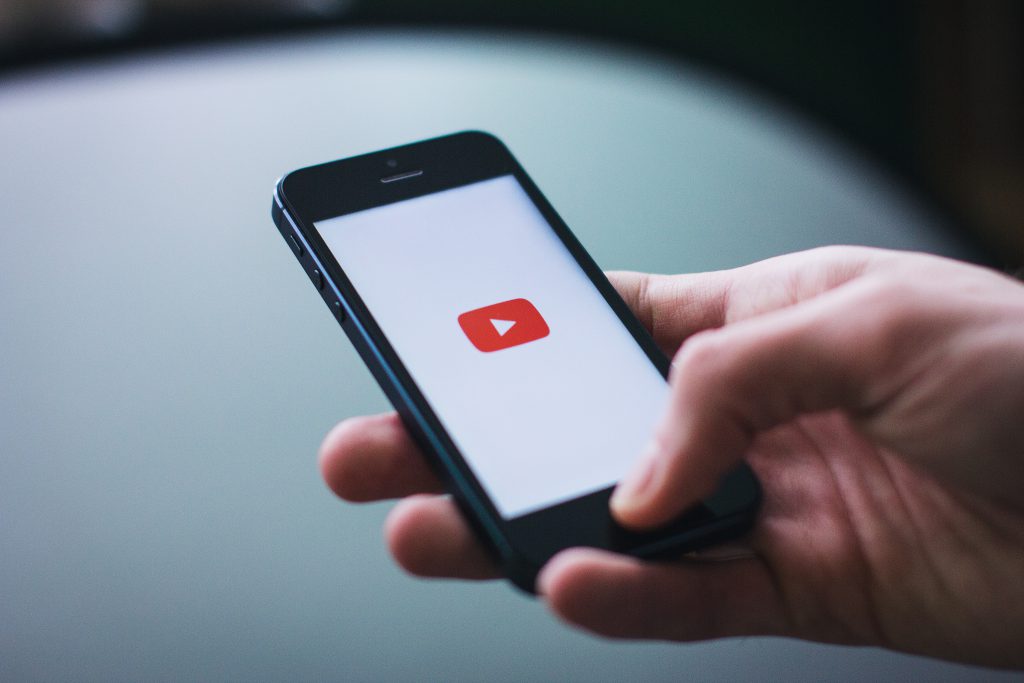
Exploring Revenue Generation on YouTube: An In-Depth Study
Executive Summary
 As the leading video-sharing platform globally, YouTube has grown exponentially since its launch in 2005. This study aims to explore the different monetization strategies used by content creators on YouTube and their effectiveness. By analyzing data from different sources, including discussions with top content creators, platform-specific statistics, and market analyses, this investigation provides a comprehensive overview of how creators monetize their content. The research concludes with a discussion on the potential future trends in YouTube monetization.
As the leading video-sharing platform globally, YouTube has grown exponentially since its launch in 2005. This study aims to explore the different monetization strategies used by content creators on YouTube and their effectiveness. By analyzing data from different sources, including discussions with top content creators, platform-specific statistics, and market analyses, this investigation provides a comprehensive overview of how creators monetize their content. The research concludes with a discussion on the potential future trends in YouTube monetization.
Context
YouTube's revenue model has changed dramatically over the years, changing from a platform mainly for user-generated content into a rewarding avenue for content creators. With over 2 billion logged-in monthly users and more than 500 hours of content uploaded every minute, YouTube presents vast opportunities for monetization. This investigation aims to dissect the multiple strategies used by YouTubers to generate revenue and evaluate their effectiveness.
Study Design
This analytical study employs a combination of research methods. First-hand information was gathered through detailed conversations with ten successful YouTubers across diverse categories, including gaming, beauty, education, and vlogging. Secondary data was obtained from YouTube analytics, industry reports, and scholarly articles. This mix of qualitative and quantitative data provides a solid foundation for understanding YouTube monetization strategies.
Income Streams
Advertising Income
Ad revenue is one of the most popular monetization approaches on YouTube. Content creators can generate income through YouTube's Partner Program by showing ads on their videos. These ads can come in multiple types, including pre-roll ads, mid-roll ads, display ads, and overlay ads. The earnings from ads depend on factors such as the viewership, audience demographics, and engagement rates.
Impact: Ad revenue can be a reliable source of income for creators with a significant viewership. However, it is affected by fluctuations based on changes in YouTube's algorithm and ad policies. Creators also face the problem of "adpocalypse," where content deemed unsuitable by advertisers results in demonetization.
Membership Programs and Live Stream Donations
Channel memberships allow viewers to join a channel for a monthly fee, providing creators regular financial support. In return, members receive advantages such as exclusive content, badges, and emojis. Super Chat is another feature where viewers can donate to have their messages highlighted during live streams.
Effectiveness: These features are particularly effective for creators with a committed fanbase. They foster a sense of community and provide creators with a more consistent revenue stream compared to ad revenue.
Branded Goods
Many YouTubers leverage their brand to offer merchandise, including clothing, accessories, and digital products. Platforms like Teespring and Merchbar work with YouTube, making it easier for creators to display and sell their products directly through their channels.
Impact: Merchandising can be very profitable, especially for creators with powerful brand recognition and loyal followers. It also allows creators to expand their income sources and decrease reliance on YouTube's ad revenue.
4. Sponsored Content and Brand Deals
Sponsored content involves agreements with brands where creators showcase products or services in their videos. These deals can be extremely rewarding but require creators to maintain authenticity to avoid losing their audience.
Performance: Sponsored content and brand deals can offer significant income, especially for creators with a large and engaged following. However, creators must strike a balance between sponsored content and organic content to preserve viewer trust.
Commission-Based Promotions
Affiliate marketing involves creators promoting products or services and earning a commission for every sale made through their referral links. This strategy is commonly used in niches like tech, beauty, and lifestyle.
Impact: Affiliate marketing can be a steady income source, especially for creators who make review and tutorial content. The effectiveness mainly relies on the trust and influence the creator has over their audience.
Community Support
Platforms like Patreon allow creators to Get monetized on youtube (https://dailygram.com/) financial support from their fans in exchange for exclusive content and perks. This model is especially common among creators who produce niche content with a smaller but highly dedicated audience.
Effectiveness: Crowdfunding provides creators a reliable income stream and encourages a closer connection with their audience. It is particularly advantageous for creators whose content may not be suitable for ad revenue.
Analysis
The effectiveness of YouTube monetization strategies fluctuates notably based on several factors, including the creator's niche, audience demographics
Executive Summary
 As the leading video-sharing platform globally, YouTube has grown exponentially since its launch in 2005. This study aims to explore the different monetization strategies used by content creators on YouTube and their effectiveness. By analyzing data from different sources, including discussions with top content creators, platform-specific statistics, and market analyses, this investigation provides a comprehensive overview of how creators monetize their content. The research concludes with a discussion on the potential future trends in YouTube monetization.
As the leading video-sharing platform globally, YouTube has grown exponentially since its launch in 2005. This study aims to explore the different monetization strategies used by content creators on YouTube and their effectiveness. By analyzing data from different sources, including discussions with top content creators, platform-specific statistics, and market analyses, this investigation provides a comprehensive overview of how creators monetize their content. The research concludes with a discussion on the potential future trends in YouTube monetization.Context
YouTube's revenue model has changed dramatically over the years, changing from a platform mainly for user-generated content into a rewarding avenue for content creators. With over 2 billion logged-in monthly users and more than 500 hours of content uploaded every minute, YouTube presents vast opportunities for monetization. This investigation aims to dissect the multiple strategies used by YouTubers to generate revenue and evaluate their effectiveness.
Study Design
This analytical study employs a combination of research methods. First-hand information was gathered through detailed conversations with ten successful YouTubers across diverse categories, including gaming, beauty, education, and vlogging. Secondary data was obtained from YouTube analytics, industry reports, and scholarly articles. This mix of qualitative and quantitative data provides a solid foundation for understanding YouTube monetization strategies.
Income Streams
Advertising Income
Ad revenue is one of the most popular monetization approaches on YouTube. Content creators can generate income through YouTube's Partner Program by showing ads on their videos. These ads can come in multiple types, including pre-roll ads, mid-roll ads, display ads, and overlay ads. The earnings from ads depend on factors such as the viewership, audience demographics, and engagement rates.
Impact: Ad revenue can be a reliable source of income for creators with a significant viewership. However, it is affected by fluctuations based on changes in YouTube's algorithm and ad policies. Creators also face the problem of "adpocalypse," where content deemed unsuitable by advertisers results in demonetization.
Membership Programs and Live Stream Donations
Channel memberships allow viewers to join a channel for a monthly fee, providing creators regular financial support. In return, members receive advantages such as exclusive content, badges, and emojis. Super Chat is another feature where viewers can donate to have their messages highlighted during live streams.
Effectiveness: These features are particularly effective for creators with a committed fanbase. They foster a sense of community and provide creators with a more consistent revenue stream compared to ad revenue.
Branded Goods
Many YouTubers leverage their brand to offer merchandise, including clothing, accessories, and digital products. Platforms like Teespring and Merchbar work with YouTube, making it easier for creators to display and sell their products directly through their channels.
Impact: Merchandising can be very profitable, especially for creators with powerful brand recognition and loyal followers. It also allows creators to expand their income sources and decrease reliance on YouTube's ad revenue.
4. Sponsored Content and Brand Deals
Sponsored content involves agreements with brands where creators showcase products or services in their videos. These deals can be extremely rewarding but require creators to maintain authenticity to avoid losing their audience.
Performance: Sponsored content and brand deals can offer significant income, especially for creators with a large and engaged following. However, creators must strike a balance between sponsored content and organic content to preserve viewer trust.
Commission-Based Promotions
Affiliate marketing involves creators promoting products or services and earning a commission for every sale made through their referral links. This strategy is commonly used in niches like tech, beauty, and lifestyle.
Impact: Affiliate marketing can be a steady income source, especially for creators who make review and tutorial content. The effectiveness mainly relies on the trust and influence the creator has over their audience.
Community Support
Platforms like Patreon allow creators to Get monetized on youtube (https://dailygram.com/) financial support from their fans in exchange for exclusive content and perks. This model is especially common among creators who produce niche content with a smaller but highly dedicated audience.
Effectiveness: Crowdfunding provides creators a reliable income stream and encourages a closer connection with their audience. It is particularly advantageous for creators whose content may not be suitable for ad revenue.
Analysis
The effectiveness of YouTube monetization strategies fluctuates notably based on several factors, including the creator's niche, audience demographics

